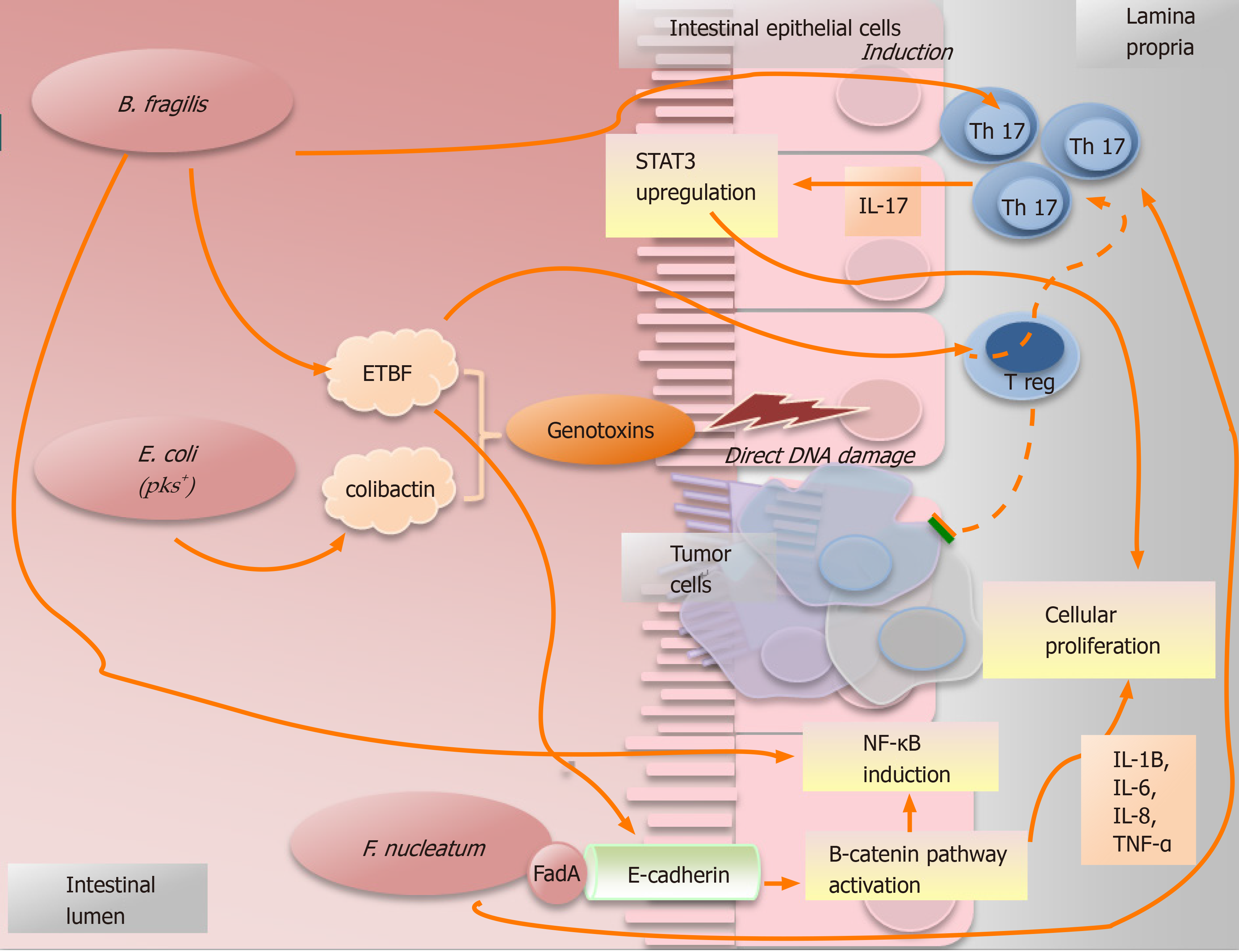Copyright
©The Author(s) 2020.
World J Gastroenterol. May 28, 2020; 26(20): 2498-2513
Published online May 28, 2020. doi: 10.3748/wjg.v26.i20.2498
Published online May 28, 2020. doi: 10.3748/wjg.v26.i20.2498
Figure 3 Simplified picture illustrating some examples of how microorganisms promote the cancer.
Bacteroides fragilis can cause the induction of Th17-type immune response with upregulation of signal transducer and transcription-3. Moreover, some subtypes of Bacteroides fragilis can secrete the toxin EBTF that can cause cancer in different ways: (1) Through direct DNA damage; (2) By Treg cells, which in presence of EBTF, seem to promote cancer progression through Th17 expansion[43]; and (3) Through the stimulation of the cleavage of E-cadherin which causes cellular proliferation and intestinal barrier breakage[23]. Nonetheless, B. fragilis can promote an inflammatory response inducing the signaling NF-κB pathway[44]. The particular group of polyketide synthase (pks) positive Escherichia coli (E. coli pks+) maintained a genomic island called “pks”. These bacteria can produce the genotoxin “colibactin”, that is able to induce direct DNA damage and, consequently, to increase the frequency of gene mutations[24,39]. Fusobacterium nucleatum can activate the β-catenin signal pathway causing cellular proliferation as consequence of the bindings between the bacterial adhesin FadA and E-cadherin which is located on the cells of the intestinal epithelium[31]. Furthermore, it is related to an increased production of some pro-cancer cytokines, such as TNF-α, IL-6, IL-12 and IL-17. STAT3: Signal transducer and transcription-3; ETBF: Enterotoxigenic Bacteroides fragilis; E. coli: Escherichia coli; F. nucleatum: Fusobacterium nucleatum.
- Citation: Bartolini I, Risaliti M, Ringressi MN, Melli F, Nannini G, Amedei A, Muiesan P, Taddei A. Role of gut microbiota-immunity axis in patients undergoing surgery for colorectal cancer: Focus on short and long-term outcomes. World J Gastroenterol 2020; 26(20): 2498-2513
- URL: https://www.wjgnet.com/1007-9327/full/v26/i20/2498.htm
- DOI: https://dx.doi.org/10.3748/wjg.v26.i20.2498









